Daffodils: description, planting, care and reproduction
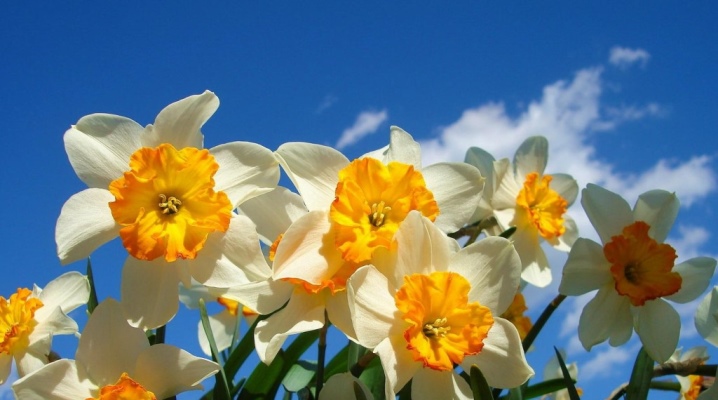
Narcissus is a touching, delicate spring flower. Alas, one cannot enjoy its bloom for a long time, but many flower growers cultivate daffodils for this very reason, in order to wait for their golden time, to see a flower bed strewn with “yard orchids”. And what beautiful lush bouquets can be collected from daffodils!
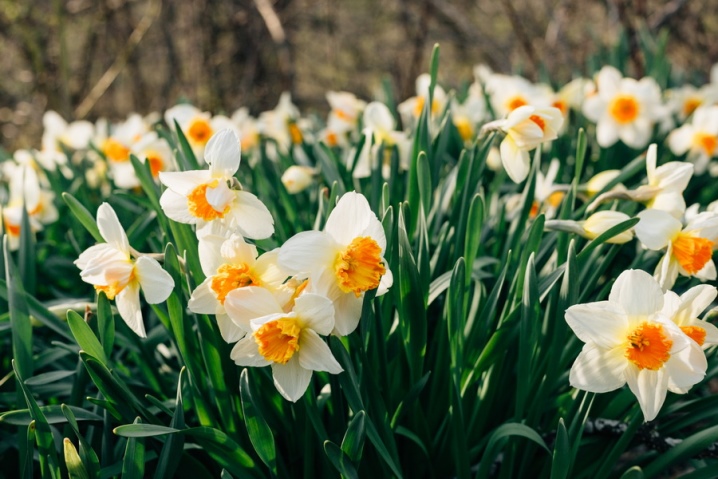
general characteristics
Traditionally, the daffodil is considered a symbol of spring and beauty, in some mythologies it is even called a talisman of love. The flower is a bulbous plant. It belongs to the genus of monocots from the amaryllis family. The plant is classified as a herb that grows from dense bulbs, with leaves that have a ribbon-like structure. Flowers are found on the tops of leafless stems.
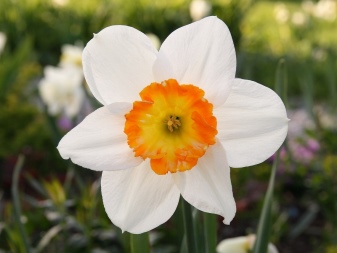
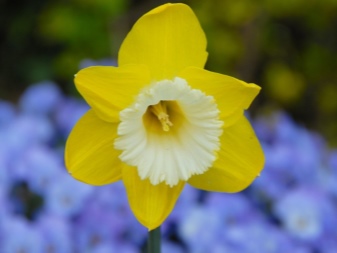
Consider the characteristics of a narcissist.
- Perianth of a daffodil petal-shaped type in shape it resembles a tubular funnel. At the top, it goes into a fold, which consists of 6 parts. In the vent there is a bell-shaped crown - lobed or solid.
- At the top of the tube, stamens are fixed in two rows. The flower has an inferior ovary, a filiform column and a blunt stigma. The fruit looks like a three-celled capsule, which bursts into 3 parts along the valves. There can be a lot of seeds in it, they are spherical in shape.
- All spring flowers of this genus are considered poisonous, since they contain the alkaloid narcissin.
- Narcissus flowers have a persistent sweet smell, which can be confidently called intoxicating. By the way, the words "narcissus" and "anesthesia" have the same root, and this can be explained by the connection between the smell of a flower and its intoxicating properties.
- In ancient times, daffodil was often used in perfumery, but today he is not actually involved in this industry. This circumstance can be explained by the fact that synthetic fragrances with an identical smell are much cheaper for the perfume industry.
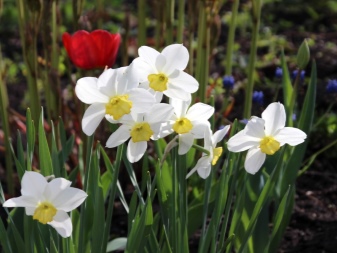
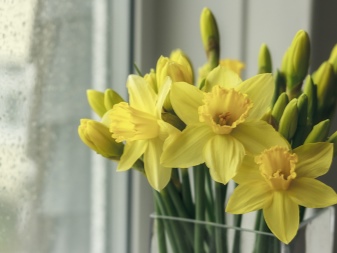
It is impossible to talk about a flower without touching on its cultural context. Probably everyone knows the legend about Narcissus, a beautiful, untimely departed young man who could not take his eyes off his beautiful reflection in the water surface. Where the young man died, delicate white flowers grew, which began to be called - daffodils.
If there are music lovers among the readers, they will surely remember sad and mystical clip of the Queen group "I`m going Slightly Mad", at the beginning of which Freddie Mercury, already dying of AIDS, appears with a daffodil flower in his handand behind him is a whole lawn of white flowers. Metaphoricity is guessed: Freddie and the creators of the video speak in this way about the untimely death of the cult musician, which can no longer be avoided. And he, already on his deathbed, can sadly laugh at himself and his own narcissism.
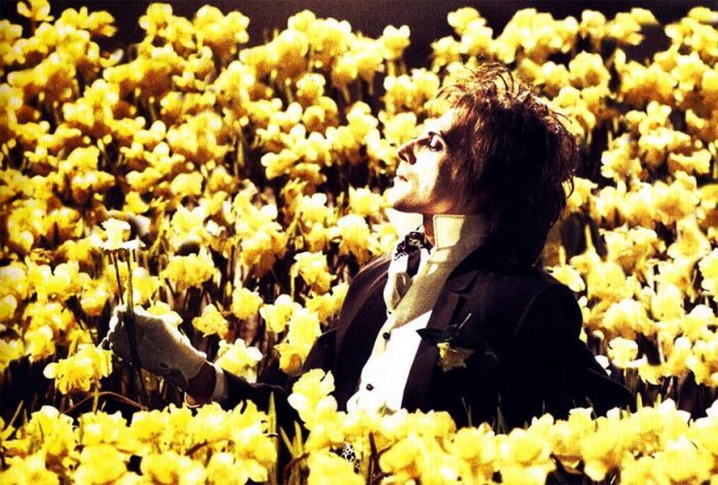
But do not associate daffodils only with sad symbols... Yet this flower is too popular to be entirely sad associations with it. Monocotyledonous plants are found everywhere - in the Mediterranean, in the south of Europe, in Asia. Gardeners actively cultivate 25 species of daffodil, as well as hybrid varieties of the plant. For example, in Italy until now, a bouquet of daffodils presented to a girl can be regarded as a declaration of love.
In Europe as a whole, since the beginning of the Renaissance, the daffodil was considered a symbol of love and lasting marriage.
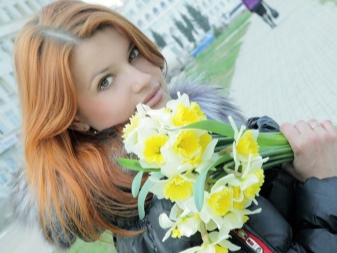

If you are going to grow this plant, it will become the basis for the first true spring bouquets. They will decorate any room in the house (but preferably spacious, since the smell of a flower is still haunting). Daffodils are simple but picturesque flowers, therefore many novice artists master watercolor from daffodils as their first models. In a word, not the most demanding to care for, the "tenacious" flower has many meanings and is traditionally considered a messenger of warm spring days.


Description of species, shades and varieties
If you look at the photo gallery, you can not believe your eyes - daffodils, it turns out, are so different. And miniature, and lush, and bright, and aristocratic pale. Daffodils can be indoor and garden, large-crowned and small, domestic and wild. Consider the most interesting options for this plant.
- Poetic. Such an interesting name is officially assigned to him. In natural nature, this flower grows in the mountains, near water sources. The plant is characterized by fast growth and very lush flowering. But it will develop and grow only in conditions of sufficient humidity and direct UV rays on the leaves.
An adult flower can grow up to half a meter. It blooms in May for 12 days.

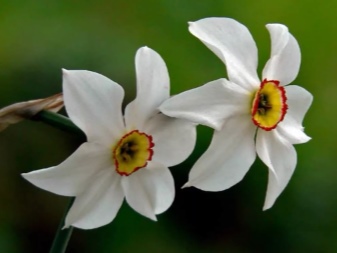
- Yellow. The speaking name is a flower with a yellow inflorescence. The plant has adapted well to our soils, and it was brought from France, Germany, Italy. In the wild, it can be found on the slopes of the Caucasian mountains. This flower will not reach half a meter, its maximum is 30 cm.
Flowering begins in the second half of May and lasts 2 weeks.
Usually, yellow daffodils become beneficial neighbors of tulips, the royal crown, and they are also found in mixed plantings with the obligatory inclusion of juniper.
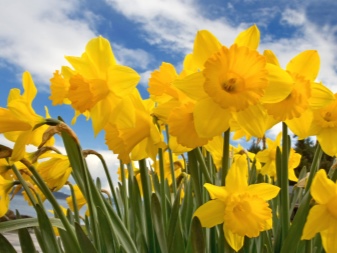
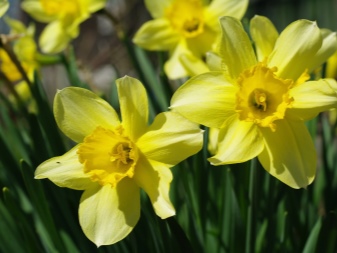
- White. It was brought to us from the Iberian Islands. In the wild, it can also be seen in the highlands, but only in places where there is a lot of grass. An adult flower grows up to 35 cm. The flower itself is white; it differs from the poetic appearance in that the crown in it also has the same color, it does not have a pronounced contour.
Blossoming of white daffodil occurs at the end of May. It lasts no more than 10 days.
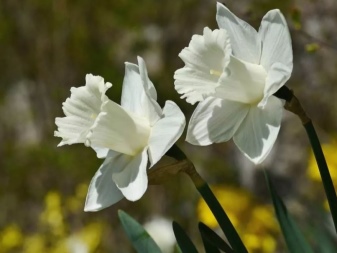
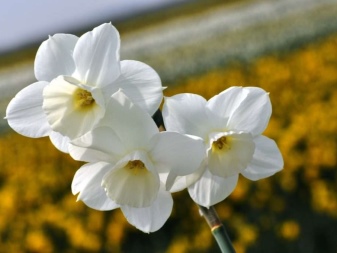
And this, of course, is not all. We can say that this is just the beginning of the story about daffodils. A flower classification assumes at least 12 plant species. And already each species is represented by a whole list of varieties.
Let's take a look at some of the plant species with the most popular varieties.
- Tubular. Only one flower blooms on each peduncle, it can be both white and yellow. The maximum flower height is 45 cm. The well-known varieties are Glacier, Mount Hood, Dutch Master, Golden Harvest, Spelbinder.

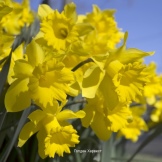

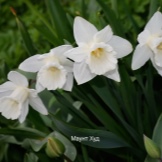
- Large-crowned. And in this case, only one flower blooms on the peduncle, but what distinguishes it is that the length of the corrugated crown of the flower is more than one third of the petal. The large-crown species is characterized by a variety of varieties with a bright, attractive border, among them - Passional, China Mad, Carlton, Confuoco, Butterfly Mix, Vanilla Peach, Modern Art, Velasquez.

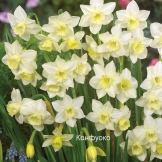
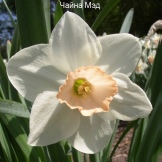
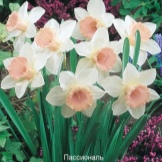
- Small-crowned. The crown is less than one third of the petal length. The petals of the varieties of this species are white, yellow or cream, the crown itself can be juicy orange, pink, red, purple or even greenish. Popular varieties include "Amor", "Evard Buxton", "Rockall", "Audiobon".
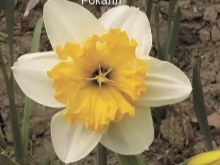
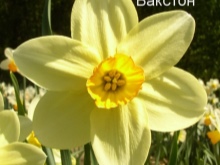
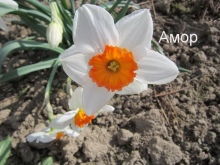
- Terry. On the peduncle there may be not one, but several flowers with a double perianth. Plants are one-color and two-color. True, such beauty has a significant disadvantage - if it gets wet in the rain, the flowers can wilt and break off. Famous varieties - "Golden Ducat", "White Cheerfulness", "Petite Fo", "Tahiti", "Texas", "Acropolis", "Ice King", "Candy Princesses".
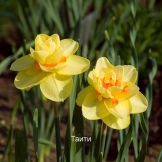

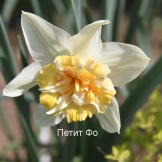
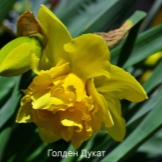
- Cyclameniform. The perianth segments of this species are seriously bent back, the flowers have a long and narrow crown. The plant reaches a maximum of 25 cm. Popular varieties - "Cottinga", "Tet-a-Tet", "Jetfire", "Jenny".
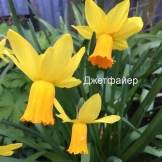
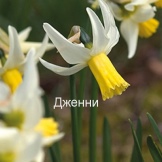
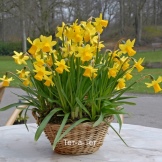

- Triandrus. The peduncle is low, two or more flowers grow on it. They can be yellow and white, golden. Of the common varieties can be distinguished "Ice Wings", "Haver", "Thalia", "Tresembl", "Yellow Chirfulness".
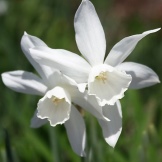
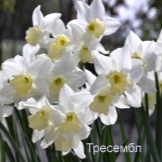
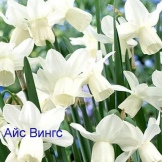
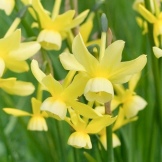
- Jonquilliae. Up to 6 flowers can grow on one peduncle, and sometimes even 8. They have rounded petals and a miniature cup-shaped crown. Such varieties as "Golden Smile", "Suzy", "Step Forward" are actively cultivated.


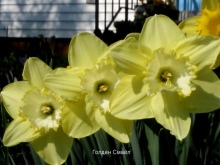
- Multi-flowered / daisy. These lush daffodils are not afraid of the cold, which is why they are especially popular with flower growers. The most popular varieties are "Geranium", "Erisher", "Horace", "Minnow".
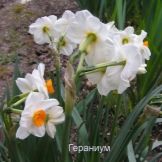
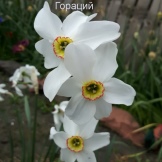
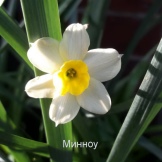
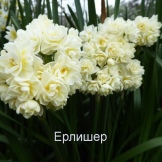
- Wild growing. They bloom early, very low, do not grow above 20 cm. Popular types include Asturian daffodils, grooved, shrouded.
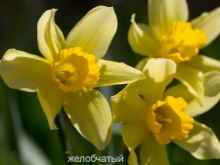
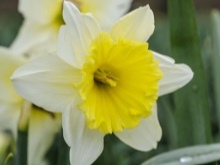
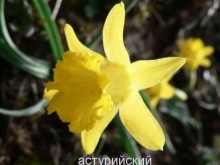
- Poetic. The species already mentioned above is familiar even to those who cannot yet consider themselves a florist. The popular varieties include "Akteya", "Red Rome", "Milan".
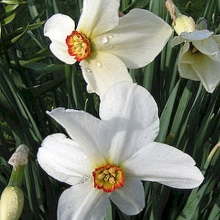

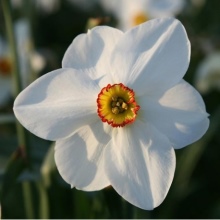
- Split-crown. The upper part of the crown in plants of this species seems to be cut, the edges of the crown have a fringed structure. Popular varieties include "Baccarat", "Papillon Blank", "Malli", "Canastu".
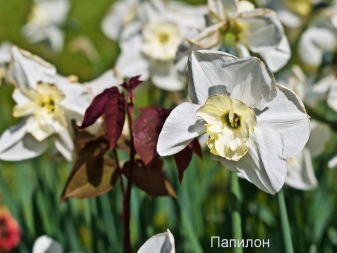
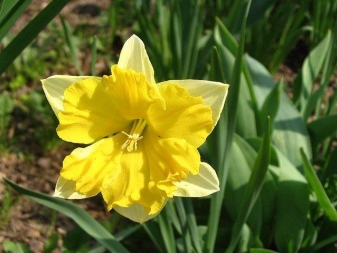
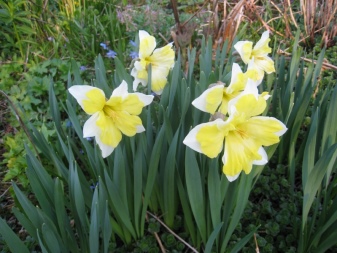

A separate group includes all those daffodils that cannot be described as belonging to any of the groups already described. A completely unusual appearance in the Peruvian daffodil, which, however, is often called a lily. Therefore, the choice of the florist is great. Beginning lovers of garden beauty should not ignore this culture, since there are no annual varieties of narcissus, all types are perennial. This simplifies the care of the plant, therefore it is not necessary to dig it out every year, in one place it spends from 2 to 5 years.

Selection recommendations
Choosing the right variety for forcing already provides the necessary ingredients for success. The experts consider multiflorous / tacettoid daffodils to be the most suitable. They are used for forcing in winter. But to say that you will have to suffer with other types of daffodils is also impossible.
Popular can be called terry, small and large-crowned species. Novice gardeners often wonder where to buy daffodil bulbs. If you are not chasing the size of the inflorescences, you can go straight to the market. Local sellers will popularly tell you why their bulbs are better than others. Of course, in comparison with a store, the price of bulbs on the market will be lower, but you get guarantees only in words.
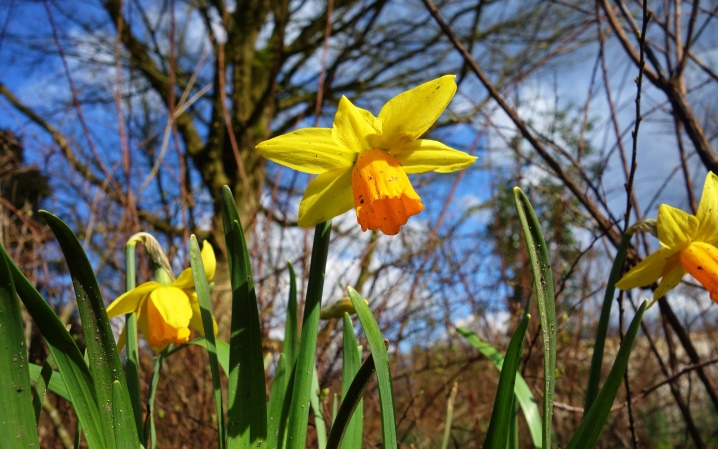
But large-flowering daffodils on the market cannot be found. In order for the flower to grow for sure and look the way its variety and the seller's statements promise, you need to go to a specialized store. Prices will be high, but you are not buying garden daffodils, but, one might say, elite varieties.
It is very important to choose healthy bulbs, which means:
- not soft, but elastic to the touch;
- odorless rotting;
- with dry brownish or golden surface scales;
- having a dry and even bottom;
- the tip of the bulb, which is correctly called the neck, must also be elastic and dry.
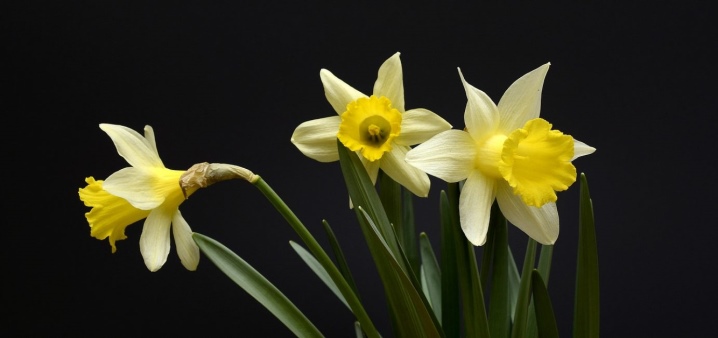
If you see a small wound on a visually healthy bulb (a cut from a pruner), you can buy it. Only this wound will have to be treated with potassium permanganate.
Seat selection
It is important and correct to choose the right place for landing. The main thing is not to place a flower garden where bulbous or nightshades previously grew. With such a planting, the risk of transmitting diseases of their predecessors to young plants remains. Requirements for choosing a place for planting daffodils:
- good lighting;
- wind protection;
- medium darkening (shadow from not very tall shrubs);
- moisture-consuming, airtight soil;
- groundwater at a depth of 65 cm or more;
- soil with neutral acidity (pH 7-8);
- the presence of well-drained soil.
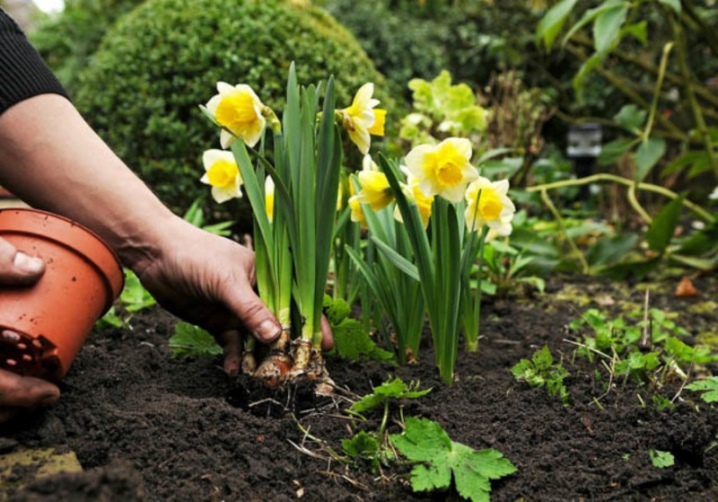
Loamy soil with a neutral reaction of the environment will be optimal for growing daffodils. Good precursors for daffodils include clover, lupins, and alfalfa. In places after pumpkins, squash and cucumbers, you can also expect good yields of daffodils.
Landing rules
According to biological activity, it is believed that daffodils have a short rest period and that planting in open ground is feasible at almost any time, except for winter. If daffodils are planted in spring, then they usually do it in regions where cool summers are celebrated. The soil temperature should be around 12 degrees. Most often, daffodils are planted in the second half of August, the deadline is September 20 (the climate of the Moscow region is taken as a conditional reference point). Why extreme - because before the onset of stable frosts, the bulbs of daffodils must form roots.
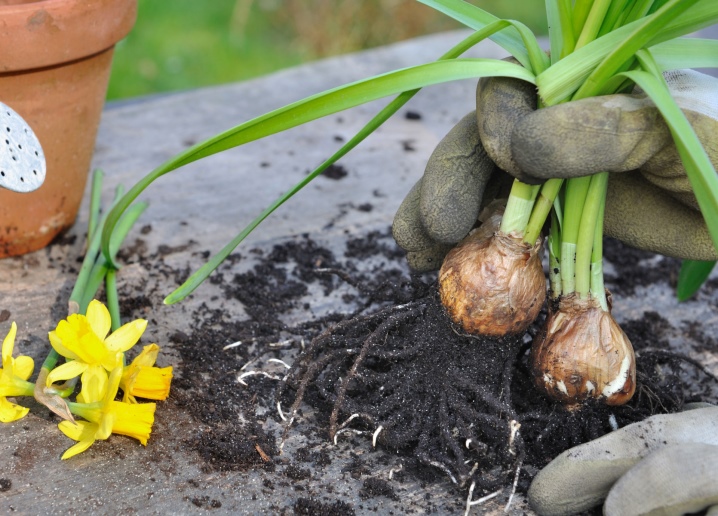
If the soil in your area is too light and sandy, then take the trouble to add clay to it. And if the soil, on the contrary, is too dense, dull, it is worth making it more productive with the help of river sand. If the soil is acidic, liming is carried out during the season (meaning the season that precedes the planting of bulbous). And for each square of the garden you need to add 3-4 kg of humus and fertilizer.
If you are preparing a garden bed for spring planting, then you need to add a complex mineral fertilizer - azofoska, for example. If planting is planned for the fall, only phosphorus and potassium are added to the soil.
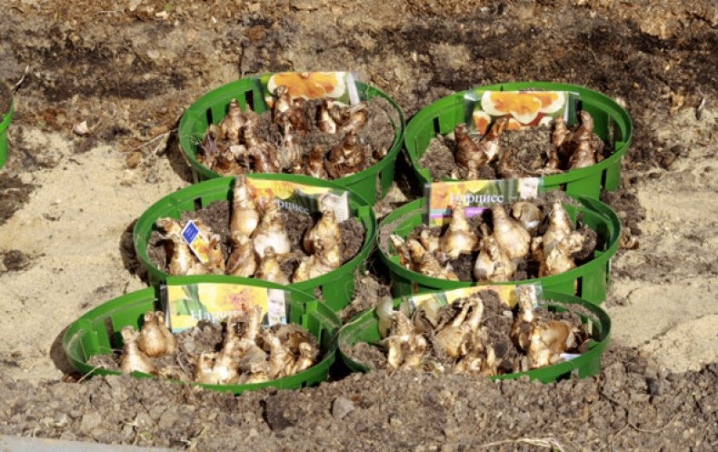
Daffodils are rarely planted en masse, because after flowering, a flower bed with drooping flowers will look depressing. So it is better to trust the classic scheme, according to which the gardener organizes small islands of daffodils from 6-7 plants, and already they are surrounded by such perennials as geraniums, hosts, cuffs. The planting depth of a flower is determined by the size of the bulb and the composition of the soil. The hole can be from 10 to 25 cm deep, it should be equal to three times the height of the bulb.
If the soil is heavy, reduce the depth of the hole by 2-3 cm, and if it is light, you can increase it by the same amount. The correct distance between the bulbs is no more than 20 cm, but no less than 15 cm.
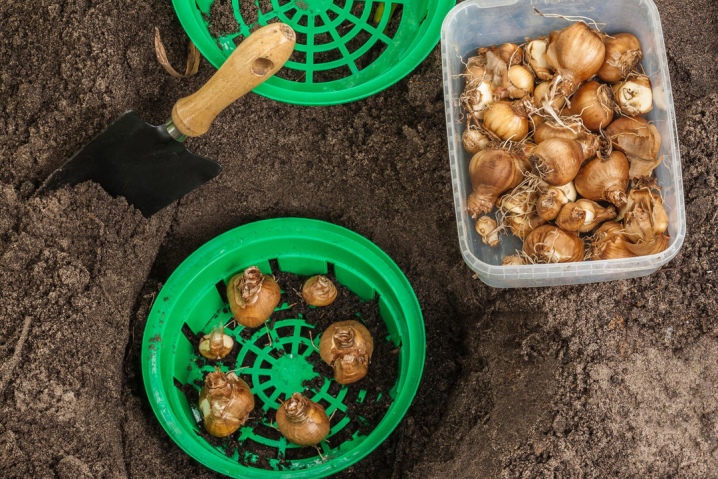
In general, the planting plan has 5 stages.
- On a section of soil prepared and fertilized as needed you need to make the holes of the correct size (according to the size of the onion).
- A little sand should be poured at the bottom of the hole, it will become a drainage that will help protect the bulbs from rot and mold.
- Gently place the bulbs in the holes upside down, cover them with earth.
- The planting site needs to be watered, watering is moderate. Do not overmoisten the soil, this is fraught with rotting of the bulbs.
- Plantings should be mulched, so that with a sharp drop in temperature, daffodils do not freeze.

Well, then - care and attention will help daffodils grow beautiful, strong, bloom in time and please everyone around them with their graceful beauty.
Features of care, watering and feeding
It is not for nothing that daffodils are considered unpretentious flowers, grateful for the slightest care. The main time for caring for them is spring and this care consists in feeding and in timely watering. And it is much easier than the transplant that daffodils need from time to time. There are even such favorable years when the flowers actually do not need care: the weather pampers, and they become a fruitful element of the "lazy" garden. But if you are not counting on the favor of the weather, you can learn to care for daffodils so that growing them is always productive.
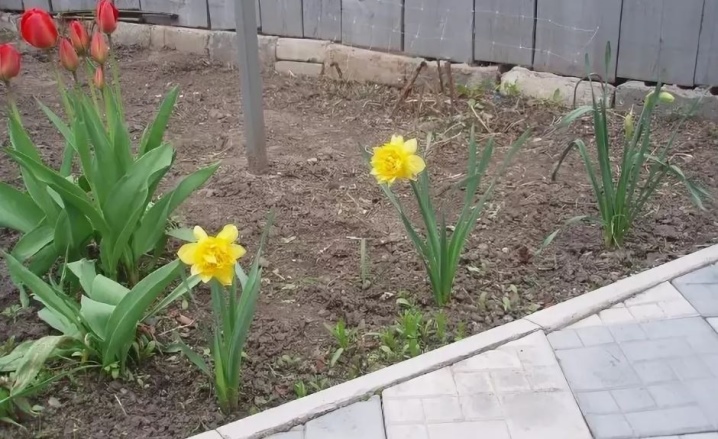
Highlights of care.
- Watering, humidity. If the weather is normal, then even at the flowering stage, the flowers will not be in dire need of regime watering. We can say that it is better to underfill than to overfill, since waterlogging of the soil is really dangerous for the narcissist.
But if there is a prolonged drought, then bulbous watering will be needed at the stages of budding and flowering, and also for a whole month after the end of these periods. The frequency is as follows: one deep, soil-saturating watering per week. It makes no sense to water so that the flowers and buds get wet. Do not use spray gun.
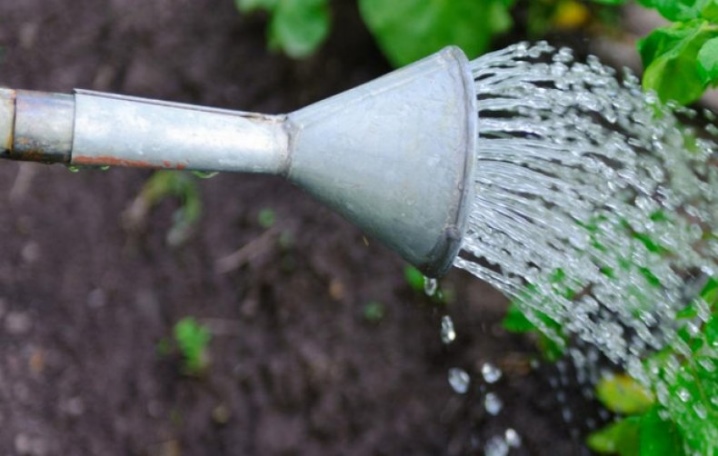
- Weeds and loosening. Constant overgrowth is characteristic of plants of this species. Agricultural technicians consider manual rather than mechanical weeding to be preferred. Wash should be done with gentle loosening of the soil.
This is done carefully so as not to injure the roots of the plant. If weeding and loosening are not part of your plans, the soil should be mulched.
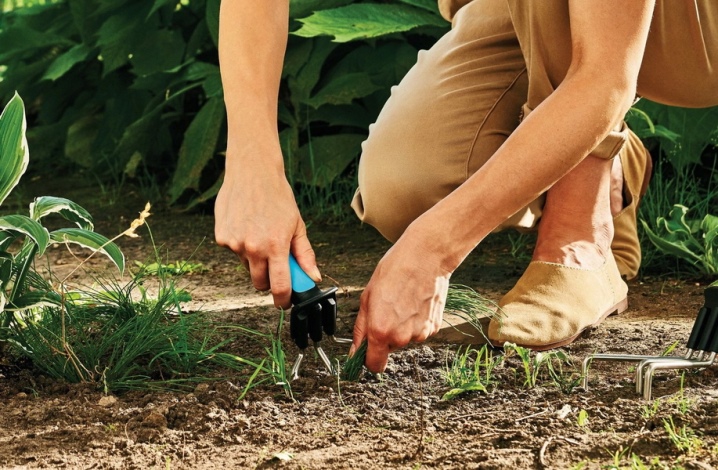
- Pruning leaves and flowers. To grow strong flowers planted in the fall, you need to remove wilted flowers right there, along with the peduncle. You cannot wait for the formation of seeds in a plant in this state. To remove the leaves, you need to wait so that they not only turn yellow, but also dry.
The process of drying out the leaves takes about one and a half months, and all this time they should not be touched. Even if such a picture does not look very picturesque, you cannot "help" the plant, you should wait for the natural completion of this stage.
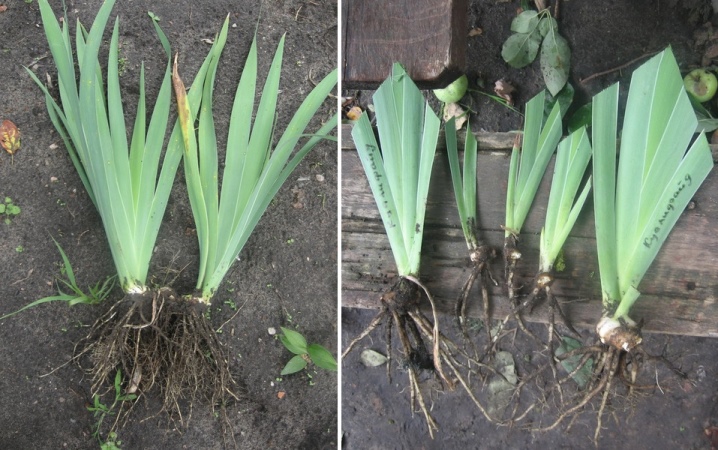
- Fertilizer. In fact, only one feeding is required, and it falls in early spring. As soon as the snow has melted, add a full portion of complex mineral fertilizers (60-70 g / bucket of water). If you want to get abundant flowering, you can divide the fertilizing into two stages: nitrogen is carried out in early spring, potassium-phosphorus - at the stage of budding.
If you decide to grow daffodils for cutting, stick to a potassium-nitrogen diet. Its scheme is as follows: the emerging seedlings are fed with full mineral fertilization, the growth of peduncles is accompanied by the introduction of nitrogen and potassium compounds, budding is complete mineral fertilization, flowering is phosphorus-potassium fertilizer.
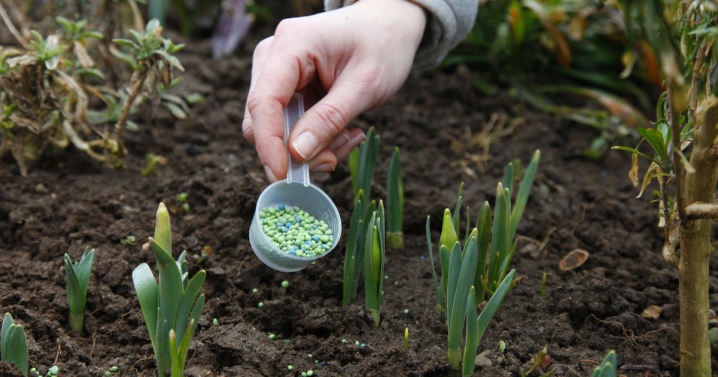
Care depends on the climate - in the Urals and in the Moscow region, it will be different. It is necessary to check with the calendar, do not carry out unnecessary watering in cold weather, do not delay planting if the climate cannot be called mild.
And some more information for those who grow daffodils at home. Do not place potted daffodils on a windowsill with other plants. If close proximity is allowed, the toxic elements of the daffodil can affect the roots of particularly sensitive flowers. And in order for daffodils to better adapt to their home environment, they need to organize nitrogen-potassium feeding.
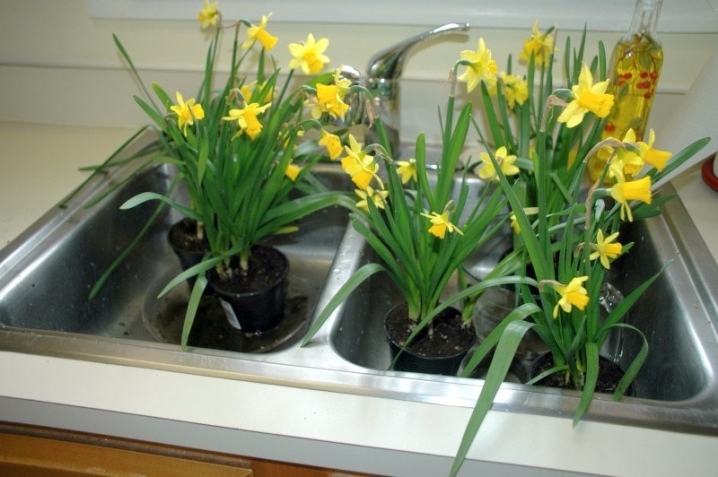
What to do after flowering?
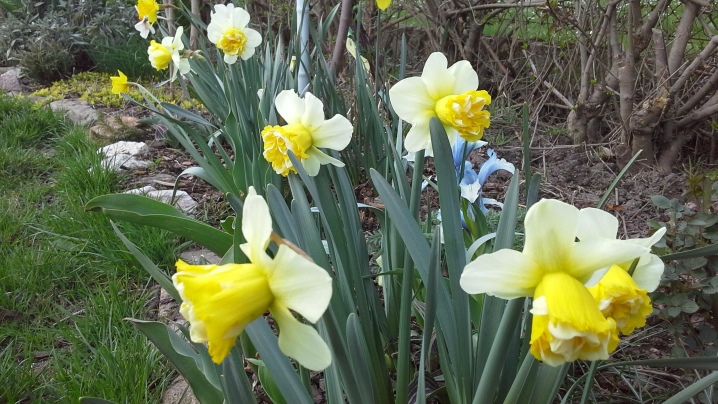
Do not dig up young bulbs with stems after the growing season. Digging from daffodils occurs on average 1 time in 2 years, and this is done so that the mother bush "shares" young children. If the bulb is adult, three years old, it is dug out after growing at the end of the second summer month or at the very beginning of August.
It must be understood that when the foliage of a daffodil has dried up, this does not mean the onset of a dormant period. Flowers still breathe, grow, receive nutrients from the soil. But the material dug out for transplantation also breathes, so you should not delay the transplant for more than 2 months.
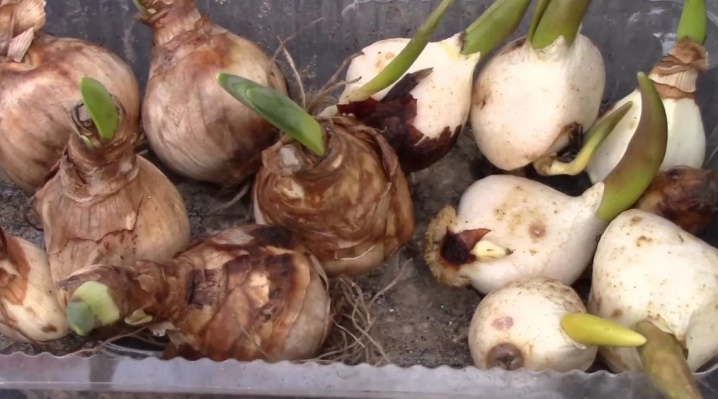
Reproduction
Reproduction of daffodils is carried out vegetatively or by seeds. If we are talking about garden forms, then reproduction occurs by separating the daughter bulb from the mother. Every year, the tops of the narcissus bulb grow, and during the growing season they subside. After a couple of years, the scales of the bulb that unite the peaks dies off, and so the nest of the flower can be divided into daughter bulbs.
Experienced growers prefer to divide the bulb in August; with this division, both parts of the scales are in the common bottom. If you do this, do not forget to process the cut with a solution of potassium permanganate. Such an onion must be stored in perlite, in a bag.

Perlite is a volcanic material with a porous structure that is used as a substrate suitable for mulching as well as for optimizing drainage.
An important condition for planting the bulb after storage is sterility.
If you choose seed propagation, then the best solution would be early sowing of undried seeds after they have ripened. But flowering with such reproduction can be expected only for 4-5 years.
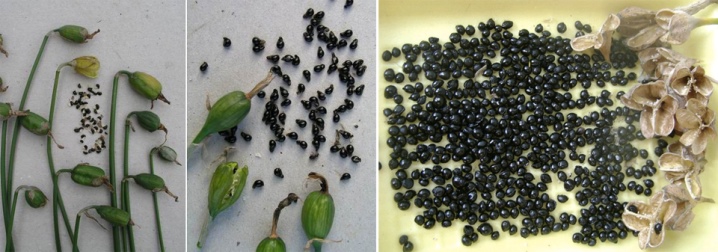
Now let's answer a few questions about how to propagate and store daffodils.
In what cases is the seed breeding method used?
The seed method is mainly used by breeders. So they get new varieties of plants. At the time of flowering, assorted bulbs must be artificially pollinated. And the seeds that originated in this way are sown by breeders in special containers with special temperature conditions.
But the bulb will begin to develop at best in the second year of life. Therefore, daffodils that reproduce by seeds are a story designed for a long period of realization.
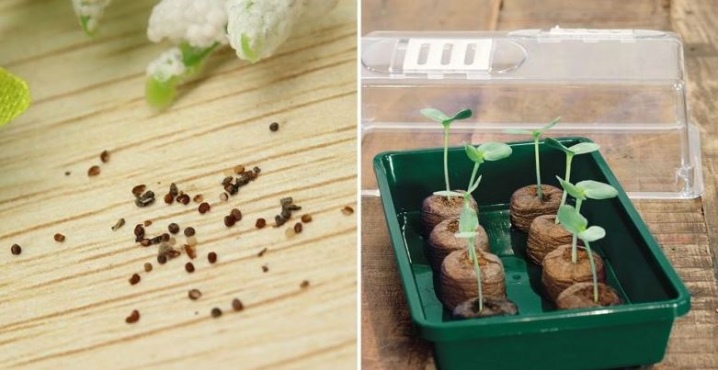
How to artificially make an onion divide?
To do this, the florist digs the bulb out, cuts it (not very deeply). After that, the bulb should be stored in a fairly cool room with comfortable ventilation. After 2 months (or a little more), the bulb will give “offspring”. AND it is already planted in the ground with the children, and in the second year new bulbs can be separated and planted separately.
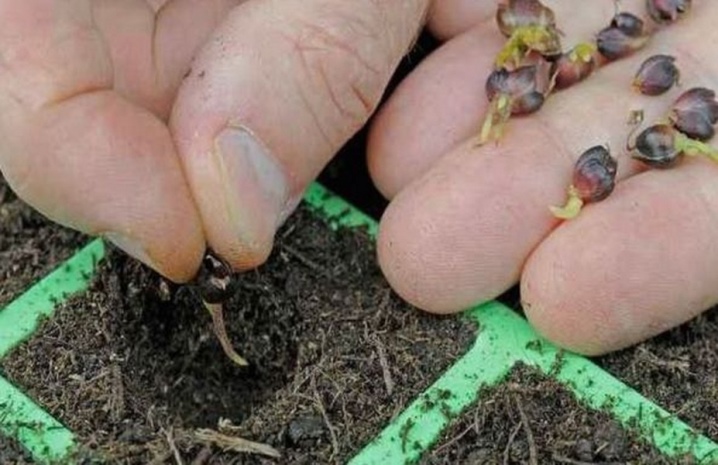
What do you need to know about digging up bulbs?
As already mentioned, the bulbs are dug out not just after the end of flowering, but after the ground part of the daffodil has dried up. The bulbs need to be delicately cleaned of soil, dried in a room with good ventilation, and so that direct ultraviolet rays do not fall on them. Then the bulbs should be sorted out with the separation of the babies. Next, it is imperative to carry out antiparasitic and fungicidal treatment. After that, the bulbs are dried again, and then they are stored until they are planted in the ground.
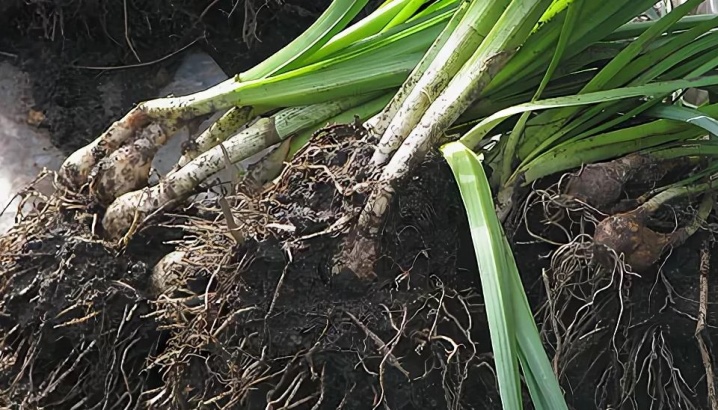
Despite their reputation as humble and unpretentious plants, daffodils are still not highly immune flower specimens. They are persistent, but not so strong that they are not at all afraid of pests and diseases.
Possible diseases and pests
Not all diseases that can affect this flower can be cured. A diseased plant should not be left on the site, no matter how sorry it is to part with it. But you definitely need to know the enemy in person, so as not to get rid of panic and fear of a plant that can still be helped.
Consider the common ailments of narcissists.
- Fusarium. This is a fungal infection that occurs due to oxysporum. The daffodil gets sick through infection of the root system. A flower that has fallen ill with fusarium practically stops growing, its roots darken, the bulbs dry and rot, a white bloom is noticeable on the scales. It cannot be cured, therefore, the flower should be urgently disposed of so that neighboring plants do not suffer. And to prevent the development of fusarium, the flower is treated with formalin on the eve of planting.
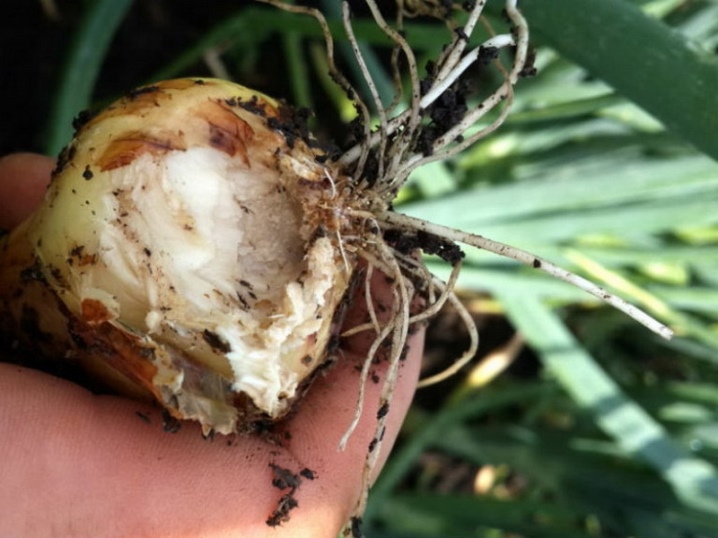
- Botrythiasis. The people call this ailment gray rot. Not only bulbous are ill with it. Fungal disease can lead to mass death of vegetation on the site.The most dangerous period is the end of summer, when the air temperature is not very high, and the humidity remains at a high level.
The spores of the fungus are carried by the wind, which is why it is so difficult to control the pathological process. The disease manifests itself as brown spots, round or oval. Spots on the leaves, on the flower, on the neck - all this leads to the death of the plant. In order to prevent botrythiasis from developing, it is important to treat the bulbous plant with a Bordeaux mixture and soapy water during the growing season.
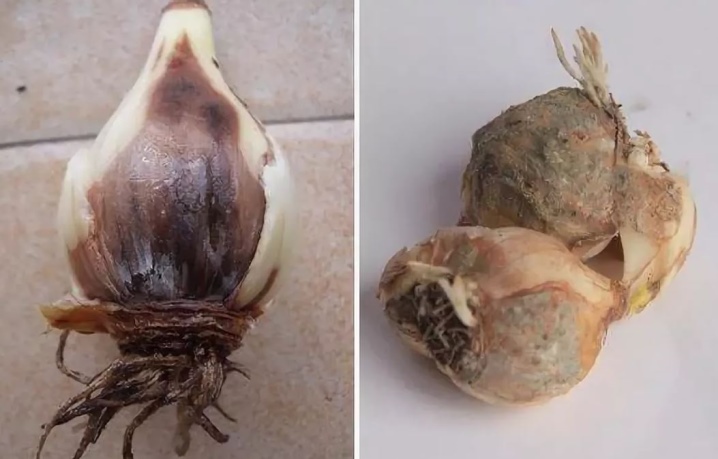
- Penicillous rot. This disease affects the bulbs during storage. And this happens due to excessive humidity. Reddish spots appear on the plant, and when the moisture level rises and the temperature drops, green spores appear. To avoid this, the planting material should be thoroughly dried, observing all the rules for storing the bulbs.
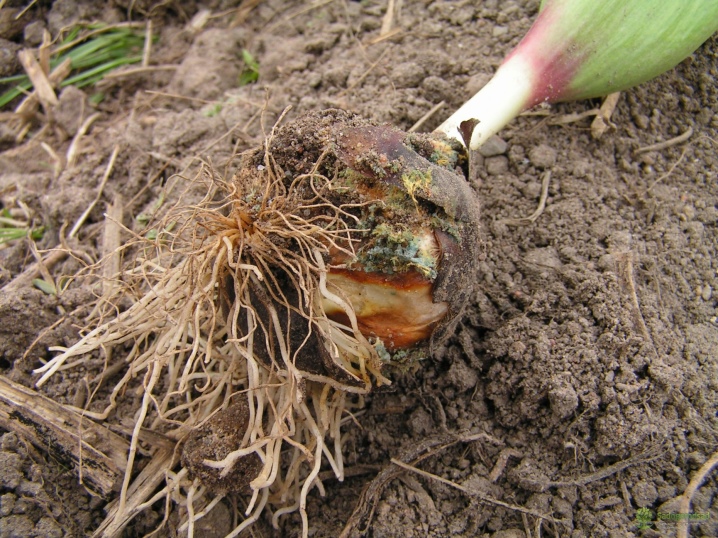
- Spotting. And this is also a fungal disease, with it, spots or even stripes of a brownish-yellow color appear on the bottom of the leaves, plaque is noticeable on these stripes. When the disease develops, the foliage dies off and the plant stops growing. If the spot has noticeably struck the plant - it must be removed, if it has just begun its development - treat the flower with copper oxychloride (you can also use the Bordeaux mixture).

- Rust. Fungal disease can affect all parts of the narcissist. In the affected area, colorless swellings are noted, over time they turn brown or orange. And these places then begin to spread spores, they are carried by the wind, and they affect all plants.
It is impossible to cure such a flower. You have to get rid of diseased bulbs, unaffected flowers need to be treated with a Bordeaux mixture.

- Bacterial rot. Pathological signs can only be seen inside the bulb. These will be mucus stains.
If the disease is not resisted, then the bulbs are simply destroyed, covered with yellow mucus. You can not expect a good harvest from them. There is no cure, only the removal of diseased flowers.
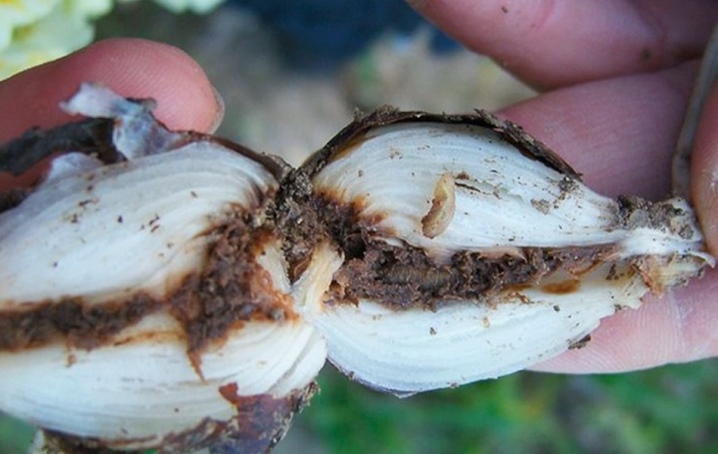
Pests and parasites also need to be feared. They can dull the growth of the narcissist, they can bring him to death. The first on this insidious list is the clicker beetle. They are black or dark brown insects with a flat and long body. When they fall on their backs, a sound similar to a click is obtained, which is why beetles are called that.
They appear where there is a lot of moisture, and can cause considerable harm to the bulbous. To get rid of the nutcrackers, you should dig up the soil, be sure to lime it, and even before planting the bulbs, treat it with hexachlorane.
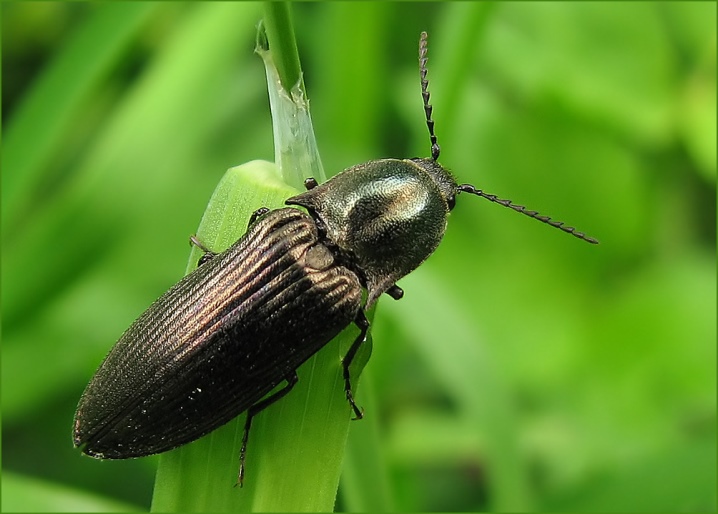
Another enemy of the narcissist is the bulbous hoverfly. This green fly settles in the bulbs, deforms the root and bottom. To get rid of this parasite, you should treat the soil with thiophos twice a week.
This insidious list also includes root mite... The oval yellow hairy pest lives in the soil, damages the bulbs, leaves eggs on the bulbs. The first way to get rid of a tick is to discard unhealthy bulbs before storage, the second is to clean the scales, treat with a soapy solution.
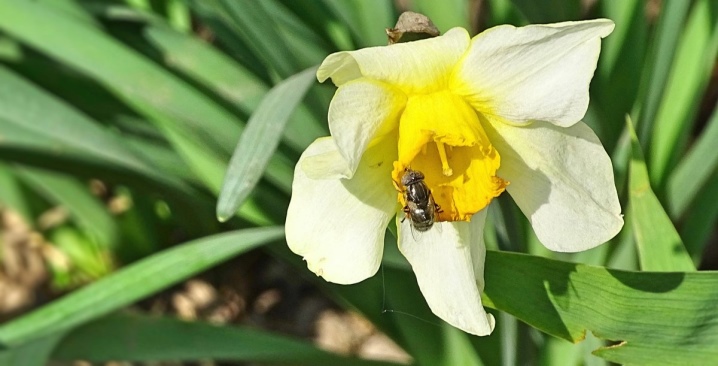
The bear, sadly familiar to many flower growers, is also terrible for daffodils. In warm weather, but in loose soil, the conditions for its life are ideal. To get rid of the bear, you need to dig up the soil, and you should also regularly weed out the weeds, and clean the soil. You should also be afraid of nematodes, slugs, cabbage scoops.
Possible problems
If you bring all the problems into one, then it will sound like this - for some reason daffodils do not bloom. There are more particular difficulties, but they can lead to the same result. And there are several reasons why unpretentious daffodils did not bloom, why the buds dry up without opening. Let's consider the main ones.
- The soil is very acidic. For the growth of daffodils, a neutral or slightly acidic soil is needed. Ideally, you should check the acidity of the soil before planting.But if they did not check on time and the flowers are already growing, the soil should be acidified. This is done using lime flour, chalk or dolomite flour.
- Fit too tight. These perennials grow really fast. The roots of neighboring flowers can intertwine, which is why the flowers cease to be tied. The bulbs have to be planted. In the very first year after transplantation, daffodils may, of course, not bloom, they rest, move away from stress. But in the second year, they should already bloom.
- Leaves were cut early. And this is also a possible reason that the buds do not bloom. If, without waiting for natural drying, you cut off the leaves, there will be no photosynthesis process (and it occurs specifically in the leaves), the flower embryo simply does not form in the bulb.
- Little light. If your daffodils are forced to develop in deep shade, then there they will grow only lush dark leaves. You will never see the flowers. Therefore, transplant daffodils to a more sunny area. You can get rid of tall objects that create shadows.
- Drought. In the spring, during growth and budding, watering is necessary for daffodils. The ground should become moist to a depth of 30 cm. But moisture stagnation must also be avoided so that the roots do not rot.
- Climatic instability. If the winter is frosty but snowless, it can kill the bulbs. That is why in the northern regions, since autumn, flower growers mulch plantings with chips, peat, sawdust or just dry foliage.
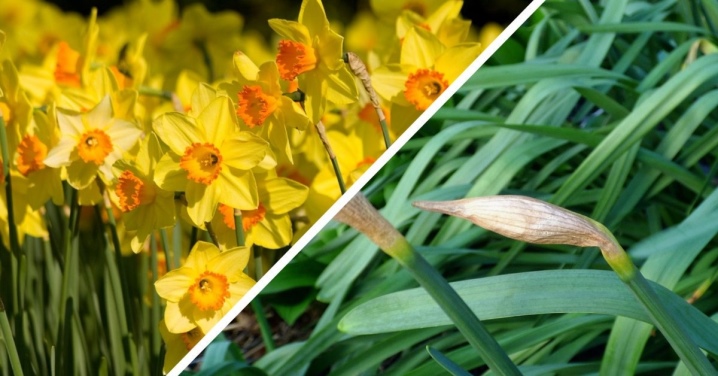
Another common issue is the yellowing of the tips of daffodils. They often turn yellow in rainy and cold springs. The flowers themselves are drawn to the light, but it is difficult for roots to develop in wet and cold ground. Some summer residents simply lay out stripes of lutrasil or black material (non-woven) between the rows of flowers. This material gives warmth, flowers come to life, rehabilitate and bloom without problems.
And don't forget that daffodils can also be driven out at home. Since the period of their flowering on the site is short, you can enjoy the flowering of an elegant plant in an apartment. There is such a variety, it does not need to be processed with cold, it is called "papery daffodil". The bulbs must be planted in a standard way in a container, put it on the windowsill and wait. The whole process will take 2-6 weeks.
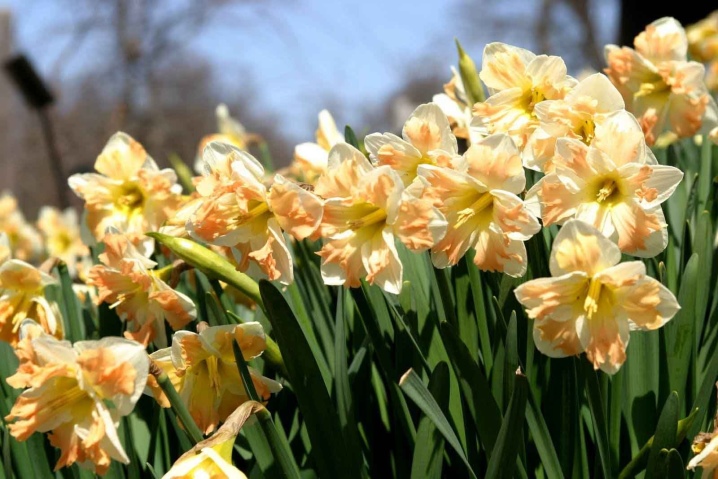
It's nice that the distillation of domestic daffodils can be timed to a certain date by yourself. For example, for the New Year holidays, you need to plant daffodils at home until mid-October. If flowers are needed by March 8, then planting will have to be at the end of January. Daffodils will grow by the May holidays if planted at the end of the first spring month.
Examples in landscape design
What is a spring garden without primroses and what primroses are without daffodils? These flowers look beautiful in bouquets, in flower beds, in garden compositions. We suggest that you familiarize yourself with the recommendations of landscape designers for growing daffodils on the site.
- Daffodils fade, and their leaves will wither for about 1.5-2 months. And since you cannot remove them, you need to think about the aesthetics of this zone. To do this, choose plants with dense foliage as neighbors of the daffodil. The dried parts of the daffodil will be hidden by this foliage, and the wilting flower will not be so conspicuous.
- If you want to create a light, truly spring landscape, for the daffodils' neighborhood, choose snowdrops and muscari. Late varieties of daffodils can be planted with primrose and brunner.
- Narcissus can be beautifully and concisely decorate alleys, alpine slides, curbs. Graceful daffodils look especially bright against the background of masonry.
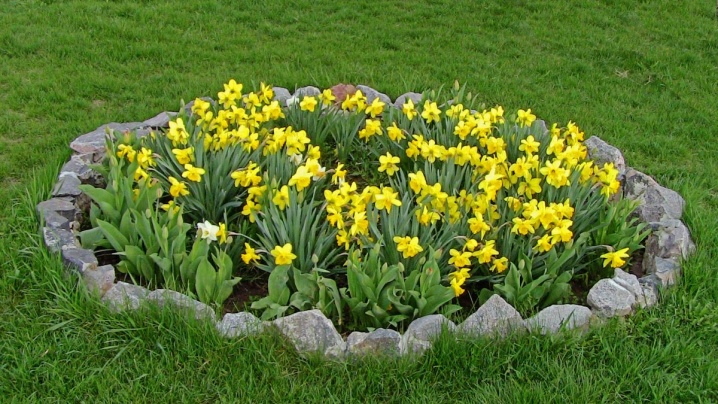
The most expressive recommendations are illustrations, photos and pictures. In the next collection of 10 interesting examples of landscape design with the participation of daffodils.
- Daffodils in pots look very beautiful, solid, unusual. In addition, you will have a great place on the site for photosets.
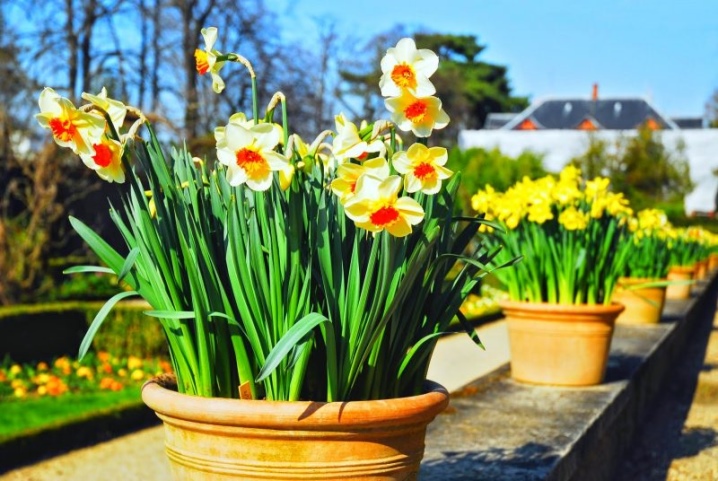
- Daffodils also look beautiful near a wooden fence, and if there are small delicate flowers nearby, this adds prettiness to the picture.
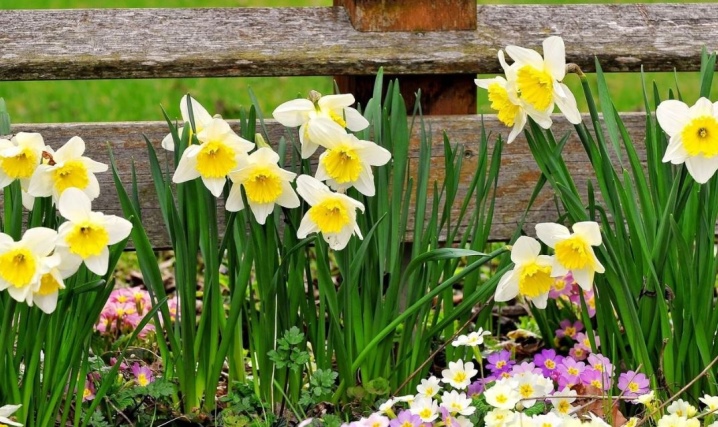
- Daffodils and tulips are a classic spring couple. For some it is just a flower arrangement, but for many it is the most real, confident breath of blooming spring.
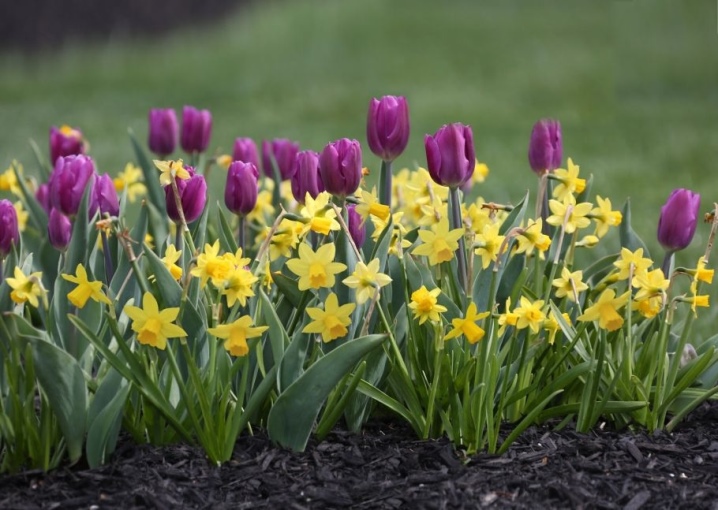
- Daffodils dancing with the wind in a wooden box Is retro that has become very modern. If you have suitable boxes just empty, it seems that it is known that they will settle in soon.
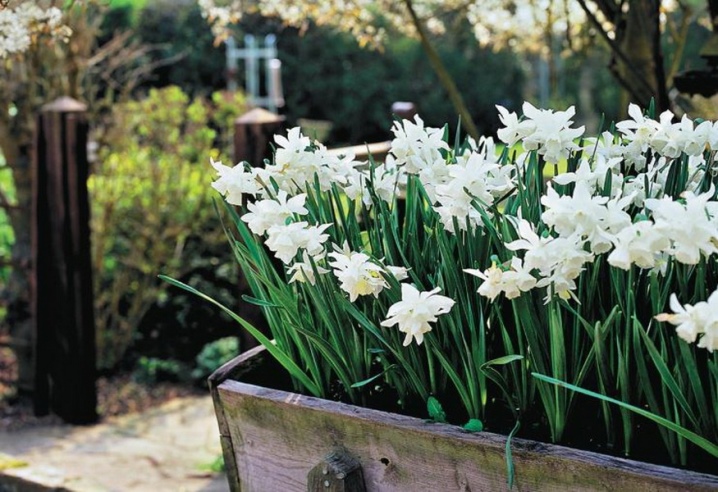
- Crocuses, daffodils, tulips can become heroes of one floristic composition. Laconic, stylish and very spring-like.
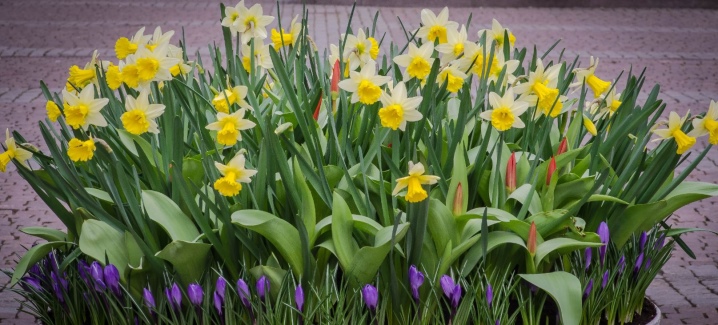
- Daffodils next to a tulip flower garden seem to emphasize all the power of their "older brothers". Can grow on both sides of a tulip path.
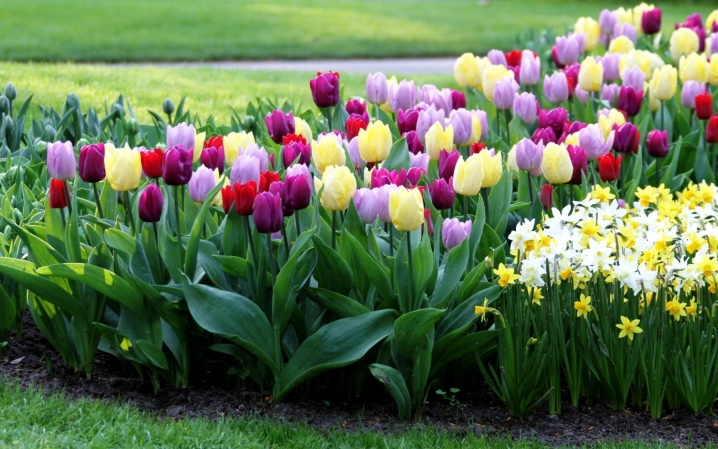
- And this is what the flowers look like behind a miniature fence. The participants in the composition may be different, but graceful daffodils are definitely indispensable here.
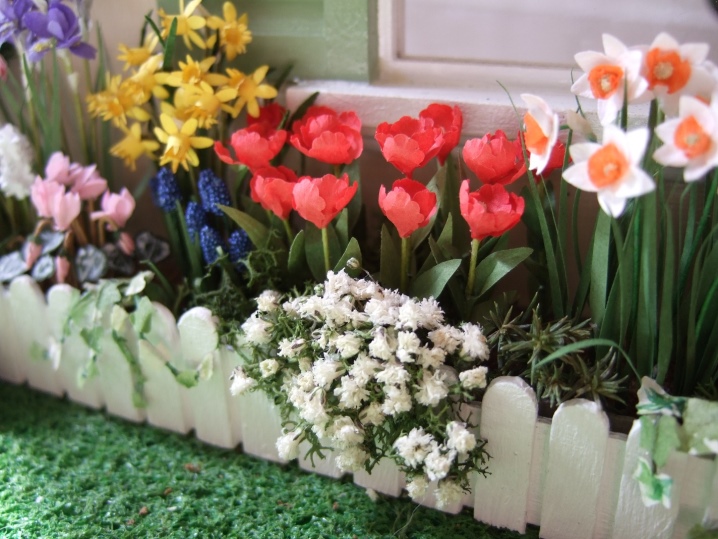
- Yellow daffodils framed by bright small flowers are a real work of art created by nature itself. Ideal decoration of the entrance to the house.
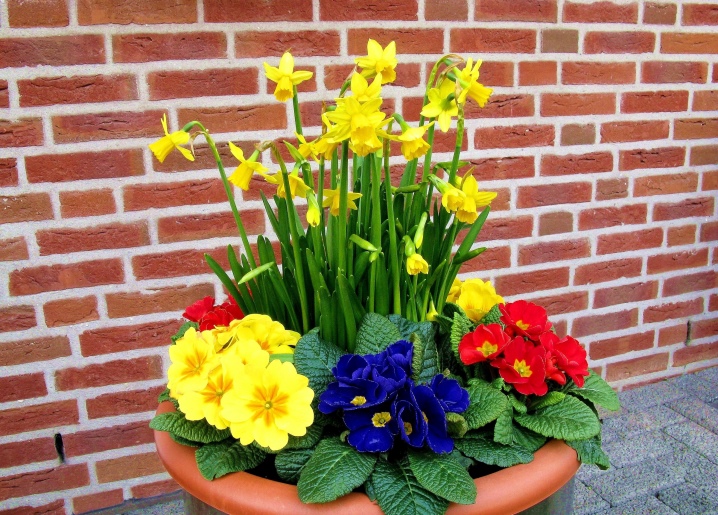
- Variegated primroses can be a wonderful frame for a gazebo, summer kitchen.
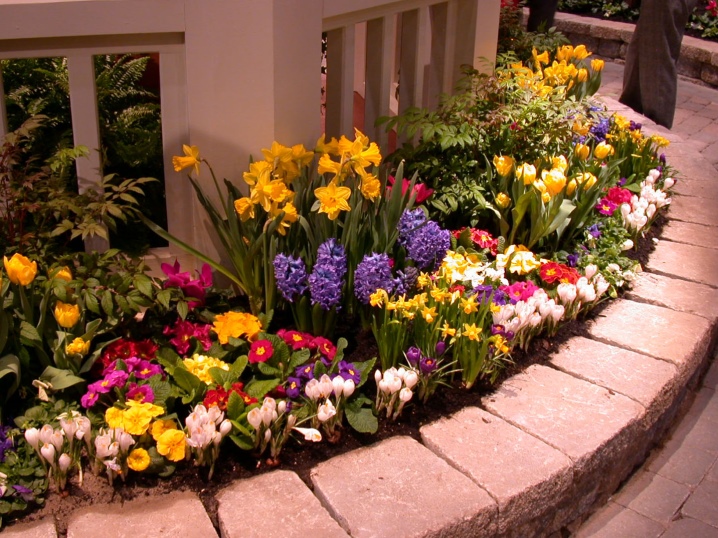
- Increasingly, flowerpots, pots, boxes are used in landscape design., various containers, forcing you to look differently at the flowering on the site. And this laconic example is proof of that.
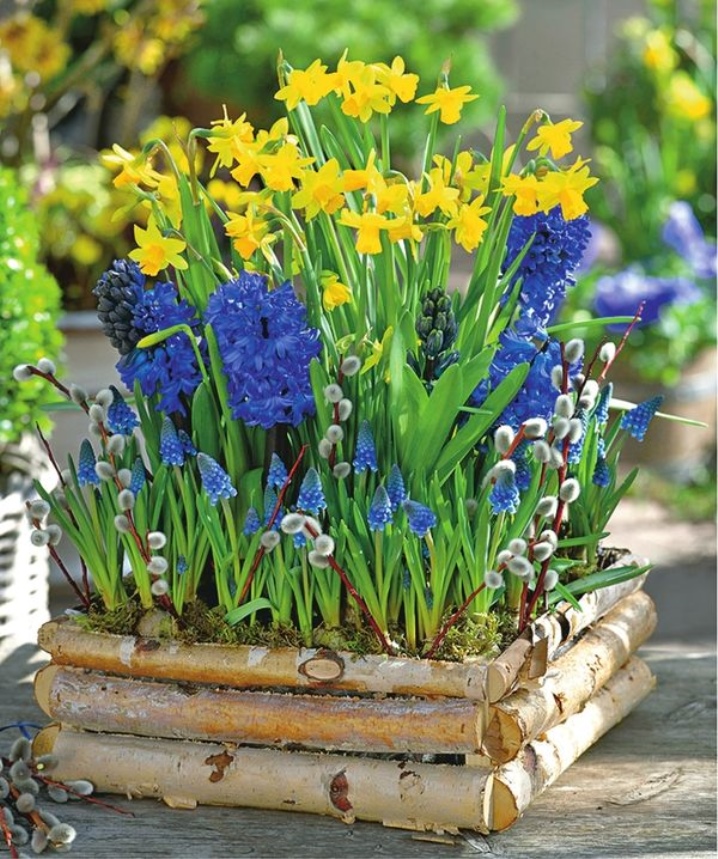
In general, we can say that daffodils are flowers that are unlikely to have a lot of problems. If you have already studied a lot of theory, and your "intellectual soil" has been enriched with new knowledge, in practice everything will go much easier. Successful planting and beauty to your site!
For information on how to properly care for daffodils, see the next video.






































































































The comment was sent successfully.